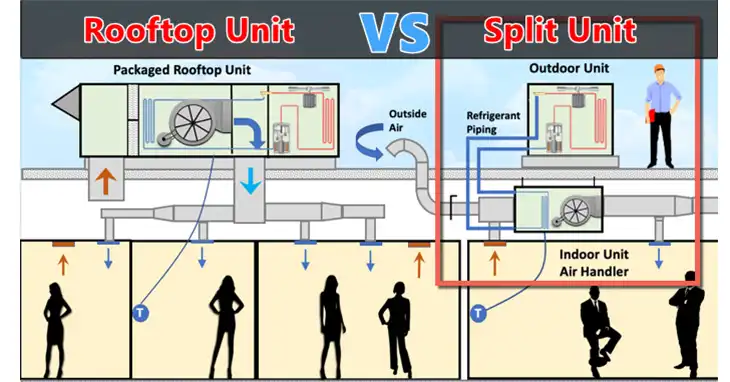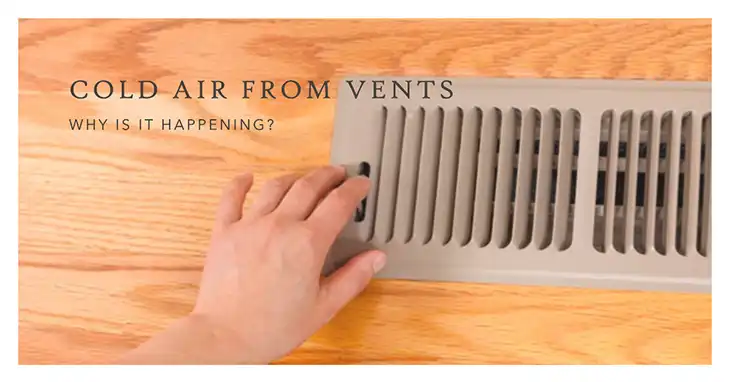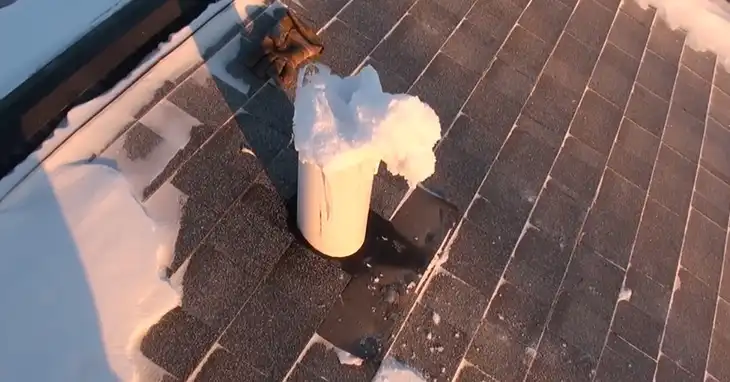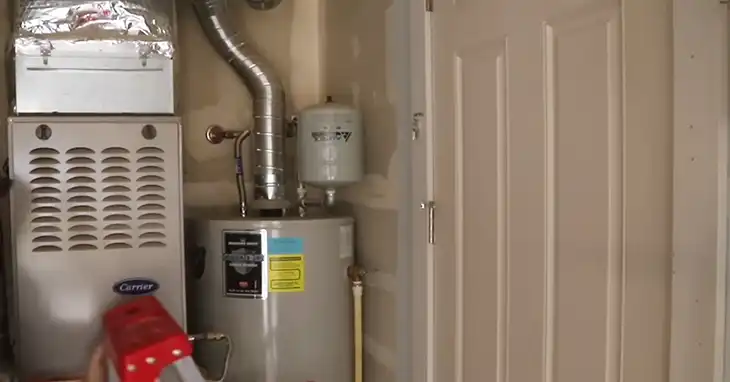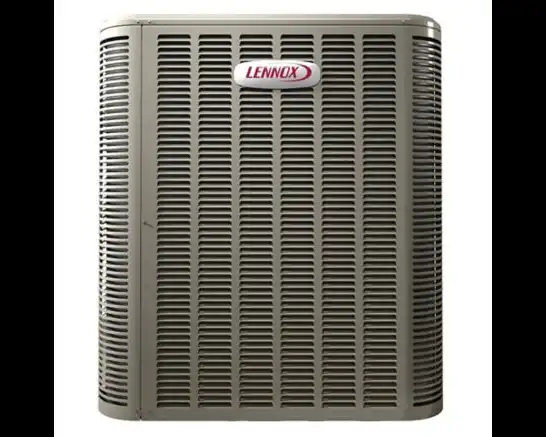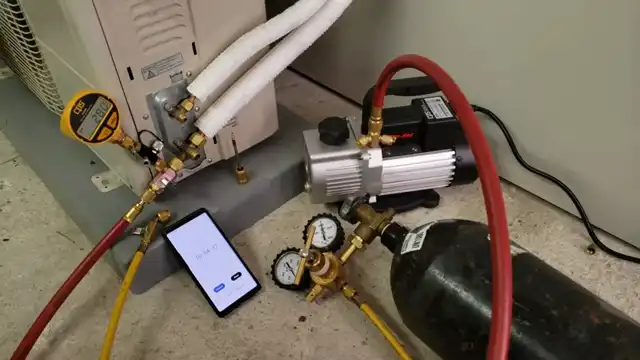Why Does My Gas Wall Heater Keep Shutting Off?
Having your gas wall heater repeatedly shut off when you need it the most can be extremely frustrating. But don’t panic – in most cases, troubleshooting the issue is straightforward once you understand the most common causes.
This article will walk you through the top reasons a gas wall heater keeps shutting down and provide tips to get your unit running properly again. We’ll also look at some preventative maintenance you can perform to avoid future shutdowns.
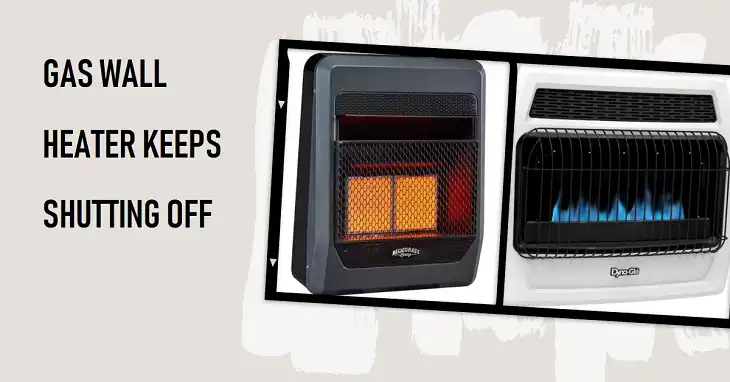
Reason #1: Clogged or Dirty Pilot Light

The small pilot light flame is crucial for igniting the main burner. If the pilot light assembly gets clogged with dust, debris, or spider webs, the flame can go out causing the main burner to shut off since it no longer has an ignition source.
A dirty pilot light can also weaken the flame and disrupt the thermocouple. Since the thermocouple relies on heat from the pilot light to operate, any dirt build-up can interfere with the electrical signal that opens the gas valve.
To fix:
Step 1: Turn off the gas supply and allow components to cool completely before servicing.
Step 2: Use pressurized air or a vacuum with a narrow hose attachment to thoroughly clean the pilot light assembly and burner tubes.
Step 3: Replace any damaged or corroded components. A damaged thermocouple is a common issue.
Step 4: Consult your owner’s manual for proper pilot light cleaning, parts replacement, and relighting procedures.
Professional cleaning is recommended to avoid damaging any components. But regular inspection and gentle cleaning can prevent major build-up.
Reason #2: Blocked Air Filter

A clean air filter is critical for allowing proper airflow across the gas burner and into the room. When the air filter gets clogged with dust and particles, it restricts airflow which can lead to a few issues:
Overheating: With restricted airflow, heat builds up inside the unit rather than dispersing outward. This excessive heat will trigger the automatic shut-off switch.
Poor combustion: Lack of oxygen can cause incomplete combustion, disrupting the pilot light and burner flames.
Blower strain: The blower motor has to work much harder to push air through a blocked filter. This extra strain can cause premature shutdowns.
To fix:
Step 1: Check your filter monthly and replace it per manufacturer instructions, generally every 1-3 months depending on use.
Step 2: Vacuum the filter gently if just lightly loaded with dust. Avoid damage.
Step 3: Ensure proper sizing – oversized filters restrict airflow.
Step 4: Confirm the filter slot is completely clean during replacements.
Regular air filter maintenance is one of the best ways to prevent repeated heater shutdowns. Mark it on your seasonal home maintenance calendar.
Reason #3: Inadequate Gas Supply Pressure

The proper gas pressure range is critical for establishing ideal burner combustion and heat output. If the supply pressure drops too low, the flame can be disrupted leading to shutdowns. Potential causes include:
Low gas line pressure – Problem with main supply lines or tank regulator. Requires professional repair.
Blockage in gas line – Build up of debris, sediment, or corrosion. Lines may need flushing.
Undersized piping – If using extension cords or unsupported pipe, may be unable to supply sufficient fuel.
Excess flow demand – Too many appliances drawing fuel simultaneously resulting in inadequate pressure.
To fix:
Step 1: Confirm regulator settings on propane tanks – Should be 10-13 inches water column.
Step 2: Contact the gas company to inspect the main lines and meter if on natural gas.
Step 3: Plumbing pro can evaluate piping for blockages and proper sizing.
Step 4: Stagger the use of major appliances like dryers, ovens, and furnaces to ensure adequate pressure.
Gas pressure issues require professional assessment for repair. Contact a licensed plumber or gas fitter. Attempting DIY fixes risks serious safety hazards.
Reason #4: Faulty Thermocouple

The thermocouple is the copper sensor rod next to the pilot light. It converts the heat from the pilot flame into a small electrical signal that keeps the gas valve open. If the thermocouple fails, the gas supply will shut off and the pilot and main burner will go out.
Some common reasons a thermocouple fails:
- Corrosion from moisture or chemical exposure
- Cracks due to repeated heating and cooling cycles
- Loose connection at the gas valve
- Defective circuit despite intact thermocouple
To fix:
Step 1: Use a multi-meter to confirm thermocouple is producing the right voltage (typically 15-30mV).
Step 2: Ensure secure fittings at both ends – valve and pilot assembly.
Step 3: Replace the thermocouple if faulty. Use the exact replacement part for your heater model.
Step 4: Reset the pilot light per the appliance manual.
Thermocouples are inexpensive and easy to replace. However, ensure the gas is off and the heater fully cooled before servicing.
Reason #5: Malfunctioning Thermostat

The thermostat directs the heater to produce heat based on measured air temperature. Problems with the thermostat can manifest in a few ways:
Premature shut off – The thermostat reaches the target temp too quickly telling the unit to shut down before the room is adequately heated. Indicates an issue with temperature sensing.
Frequent cycling – Once the target temp is reached, a faulty thermostat causes the unit to cycle on and off repeatedly. This prematurely wears out components.
No signal – A failed thermostat does not signal the unit to start heating even when a set temperature is not met.
To fix:
Step 1: Test thermostat accuracy with a separate thermometer placed nearby. Note differences.
Step 2: Inspect thermostat wiring for loose connections, damage, or pinched wires.
Step 3: Replace batteries if applicable and ensure clean contacts.
Step 4: Replace the thermostat if faulty. Select the proper replacement certified for your appliance.
Programmed temperature settings, lockouts, and other features may need to be reset on a new thermostat.
Reason #6: Inadequate Combustion Air Supply

For the gas combustion process to work properly, an adequate supply of fresh oxygen is required. Certain situations can disrupt the oxygen supply leading to intermittent shutdowns:
Blocked air inlets – Vents blocked by nests, snow or other build-up prevent intake of combustion air.
Restricted flues – Build-up in the flue pipe impedes ventilation of exhaust gases.
Tightly sealed rooms – Modern air-tight home construction can result in oxygen-starved environments.
Exhaust fan operation – Bathroom or kitchen fans draw air out of the house, potentially depleting oxygen temporarily.
To fix:
Step 1: Clear any debris or obstructions from the outer air intake vents.
Step 2: Have flues professionally inspected and cleaned to ensure adequate flow.
Step 3: Open a window or outside door briefly when operating exhaust fans to replenish household oxygen levels.
Step 4: Have a technician evaluate ventilation needs and recommend system improvements if issues persist.
Providing ample air circulation prevents flame starvation which avoids frustrating shutdowns.
Reason #7: Corroded Flame Sensor

The flame sensor is a thin rod adjacent to the burner that verifies a flame is actually present after the gas valve opens. If corroded or contaminated, the flame sensor will fail to detect flame and shut off the gas supply as a safety precaution.
To fix:
Step 1: Clean the flame sensor with emery cloth or fine steel wool to remove corrosion.
Step 2: Ensure proper insertion depth – Flame should envelope 3/8″ to 1/2″ of the sensor.
Step 3: Check for cracks or damage. Replace the sensor if necessary.
Step 4: Verify electrical connections are clean and tight.
The flame sensor is a crucial safety device. Take care not to damage it during cleaning and ensure it’s properly aligned with the burner flames.
Reason #8: Blockages in Flue Pipes

The flue pipe vents combustion byproducts like carbon monoxide safely outside after being expelled via the blower. Blockages in this flue pipe can create a safety hazard:
Combustion gas backup – Gases can leak into living space leading to carbon monoxide poisoning.
Overheating – Unit components like the blower motor are forced to work harder with restricted venting.
To prevent these dangers, heater units are designed to shut off when flue blockages are detected.
To fix:
Step 1: Inspect the entire flue pipe length for debris build-up or nest blockages.
Step 2: Check the exterior hood for snow, ice, or small animal nests blocking the vent.
Step 3: Remove any identified clogs or obstructions.
Step 4: Have the HVAC professional deep clean flue pipes if needed.
Proper chimney maintenance is essential for keeping your heater running smoothly and safely.
Additional Troubleshooting & Maintenance Tips
If you’ve thoroughly checked the common culprits and your heater persists in shutting down prematurely, it’s time to dig deeper. Evaluate whether any air vents are blocked, listen for struggling blower motor sounds, and test safety switch continuity. Check that minimum gas inlet pressure is met under full load.
For automated heaters, rule out any app connectivity issues. If problems continue despite the best DIY efforts, call a technician to properly diagnose and repair the system. You can minimize nuisance shut-offs by annually cleaning the pilot assembly, replacing air filters regularly, vacuuming vents, visually inspecting burner flames, and having a pre-season tune-up.
However, pilot light adjustments, gas leak concerns, venting issues, and electrical testing should be handled by HVAC professionals. Don’t continue resetting a persistently faulty unit yourself – the underlying problem needs to be identified and fixed by a qualified technician for optimal safety and performance.
Frequently Asked Questions
Why does my heater make loud noises before shutting off?
Harsh grinding, squeaking or rumbling noises point to an issue like a blocked blower motor or stuck component. Have the unit inspected by a technician to identify the problem.
The pilot and burner ignite but shut down after a few minutes. What’s wrong?
This points to a thermocouple failure. Replacing the faulty thermocouple should resolve the short running times.
There’s a burning smell coming from my heater before it shuts off. Cause?
Odor indicates overheating which likely means restricted airflow due to a clogged filter, vent blockage, or blower motor issue. Shut off the heater and call for service.
My heater keeps shutting off at night but works fine during the day. Why?
The most likely culprit is a problematic thermocouple. The pilot flame cools at night which can prevent proper thermocouple function leading to flame loss and shutdown.
My heater runs fine for an hour then shuts down. What should I check?
This delayed shutdown points to a possible high-limit switch trip due to overheating from insufficient airflow. Try cleaning or replacing the air filter first before further troubleshooting.

